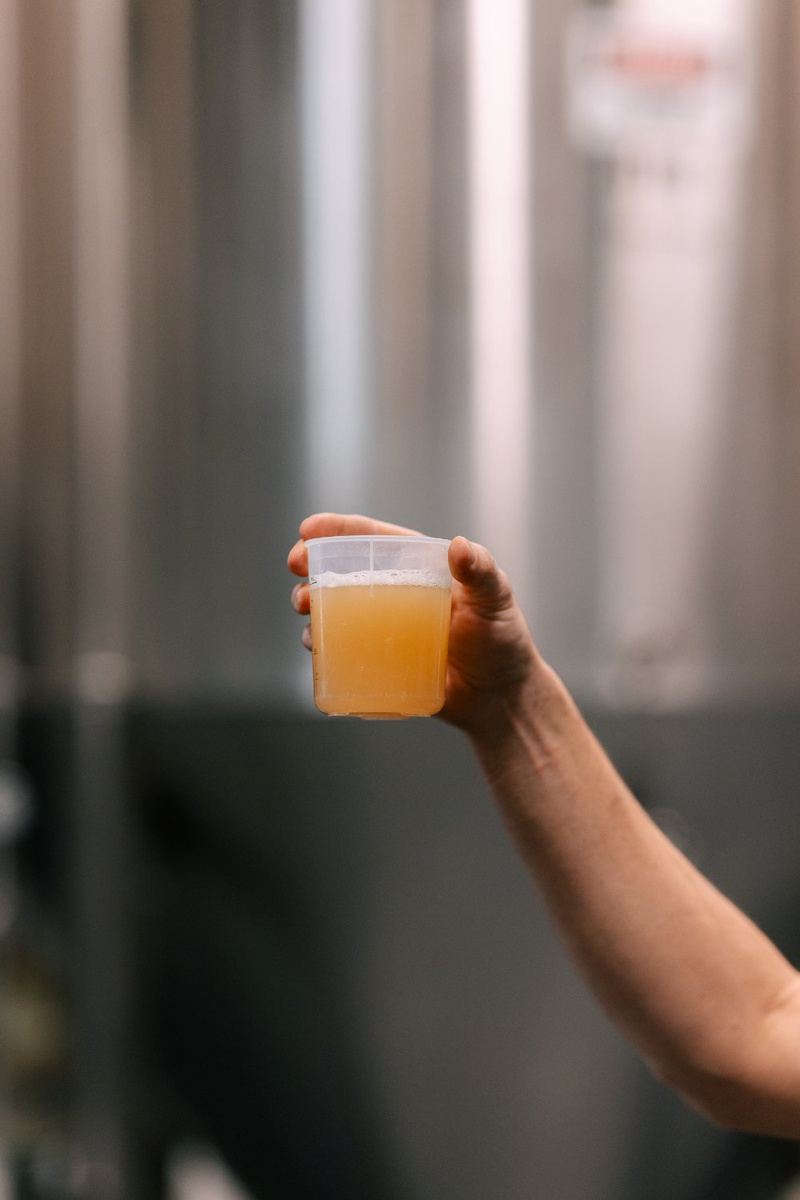To answer the question technically, wort is a liquid solution of extracted grains, a sugar source which brewers create and then ultimately feed to beer yeasts. Non-technically, wort is sugary grain water.
All fermented beverages—be it wine, beer, hard cider, or spirits—start with some sort of liquid sugar source. The sugar is then eaten by yeast, which creates alcohol, CO2, and additional flavors. For example, in wine the sugar source you start with is grape juice, for cider you start with apple juice, and for beer you start with wort.
Before we can even begin the process of creating wort, however, the grains must be prepared with a process called malting. Most, but not all, brewing grains are malted before use.
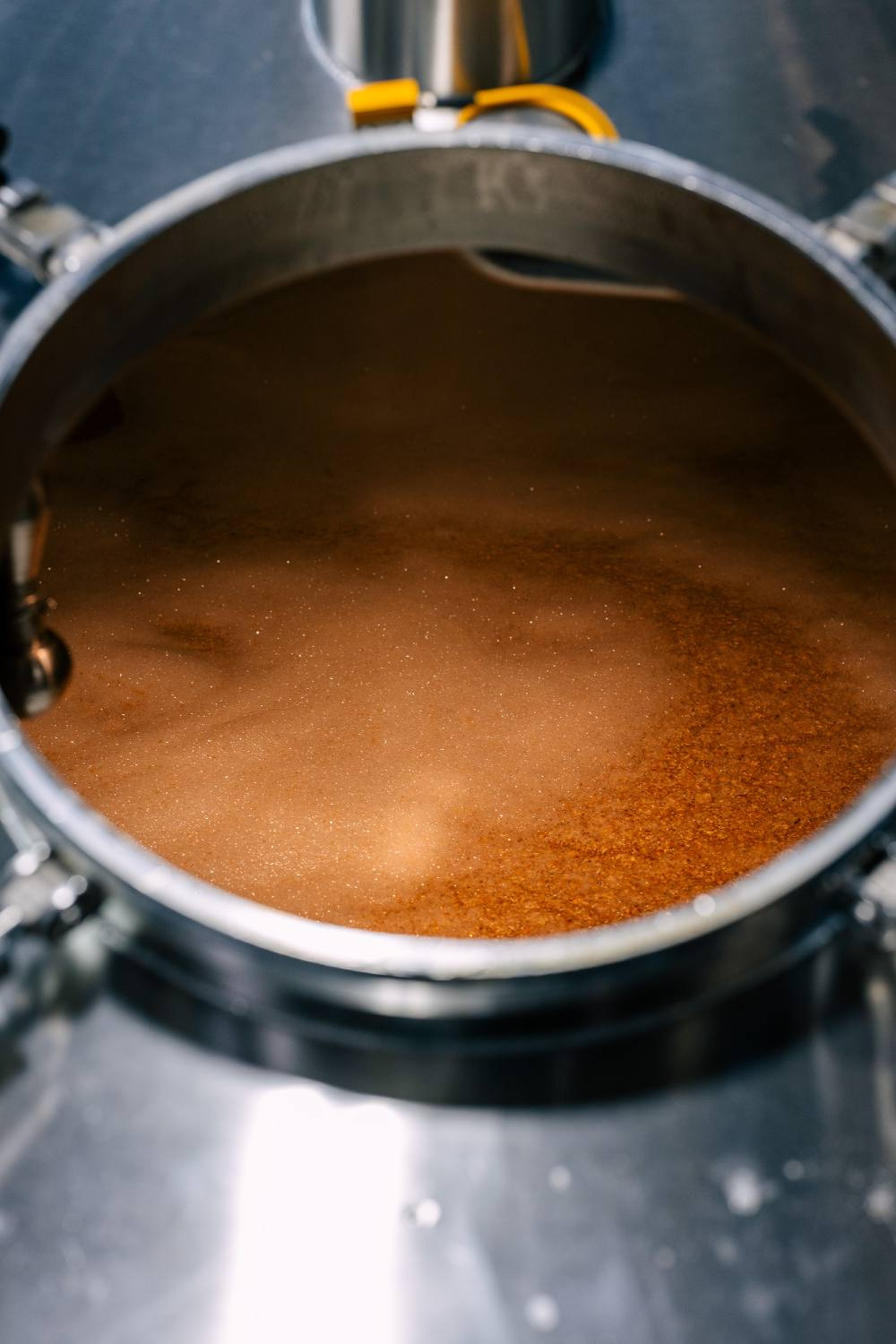
Wort sitting in the brewing vessel known as the mash tun.
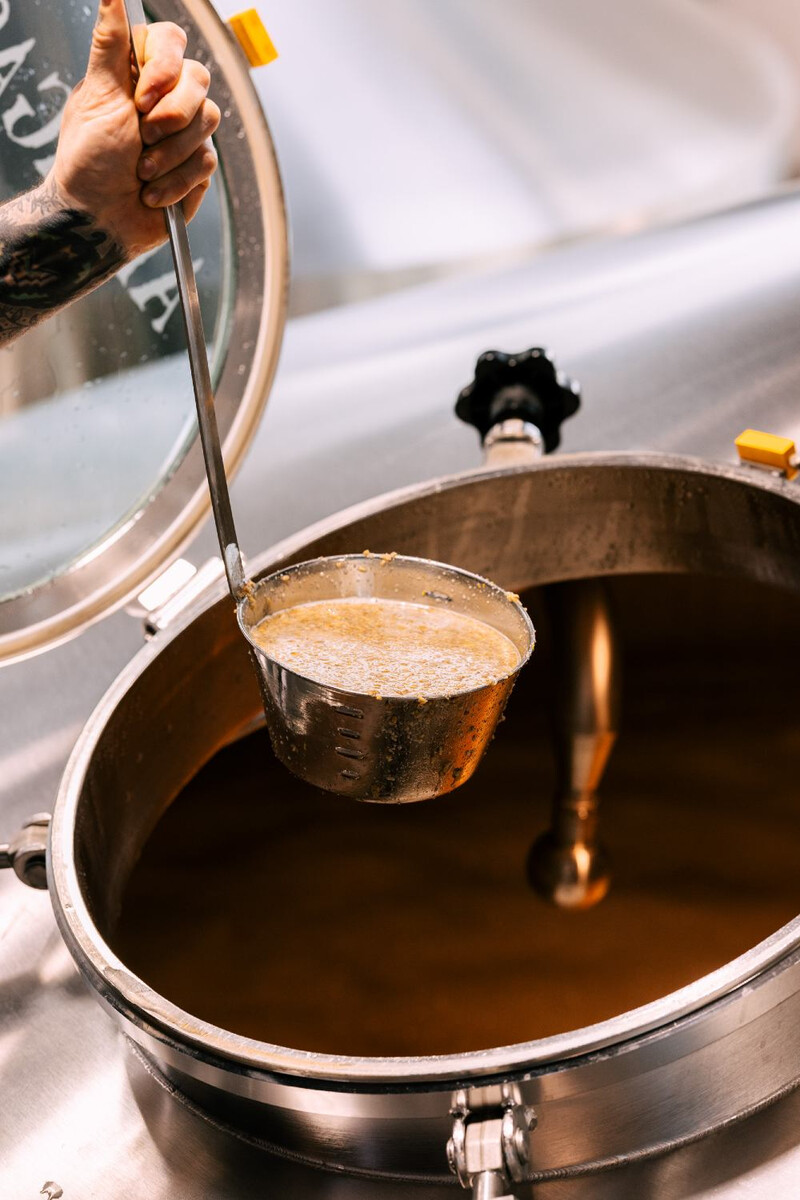
Grabbing a ladle of wort for testing.
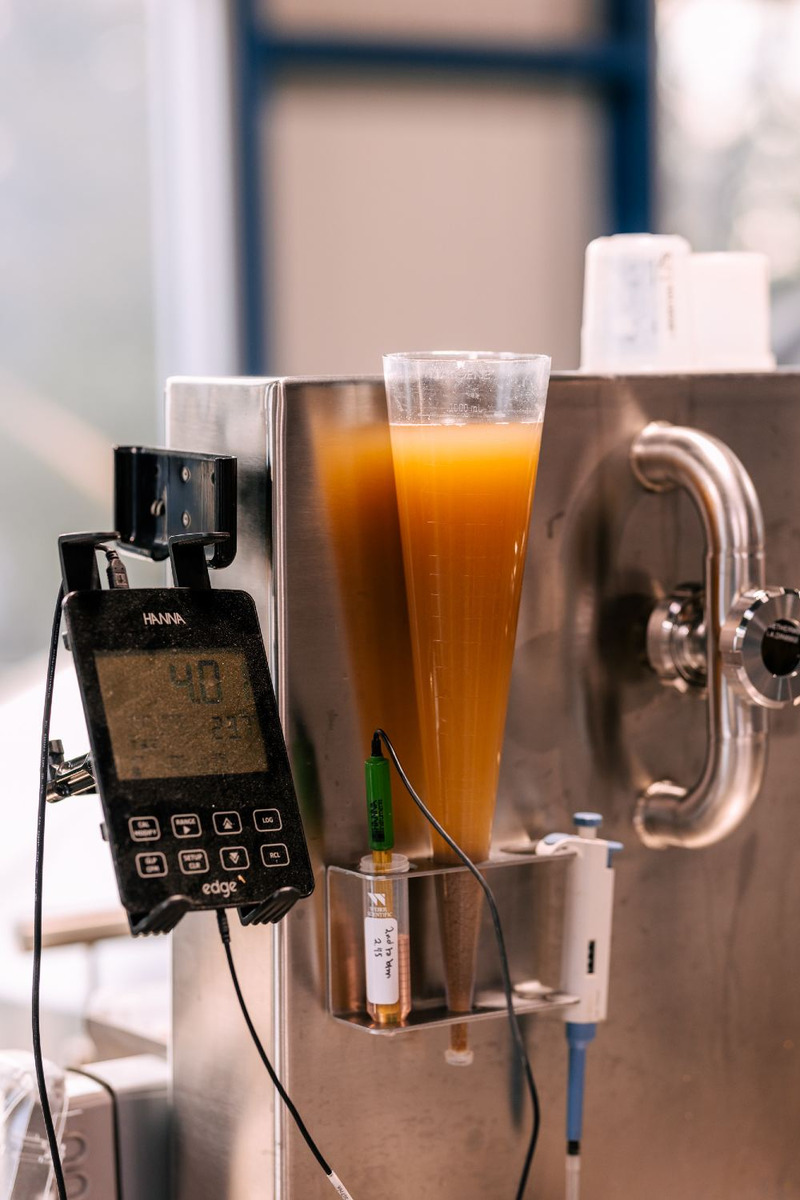
A look at some of the equipment we use to evaluate wort during the brewing process.
MALTING TIME
Malting is a pretty complex process, but we’ll try to keep it simple here. Generally, the maltster (the person doing the malting) takes raw barley (or other grains) and soaks them in water. The grain is then encouraged to sprout on a large floor or tank. This germination process activates enzymes inside each and every kernel of grain, which will eventually allow the grain to create the sugars that brewers are looking for.
After the grains are germinated, they are kiln-dried to various degrees, creating many different potential flavors and colors in the final beer. As in, if we roast a grain until it’s nice and brown, it could be used to make the dark hue in a stout. Or if we lightly dry a grain, it could be used to make the light-golden color you’ll find in a pilsner.
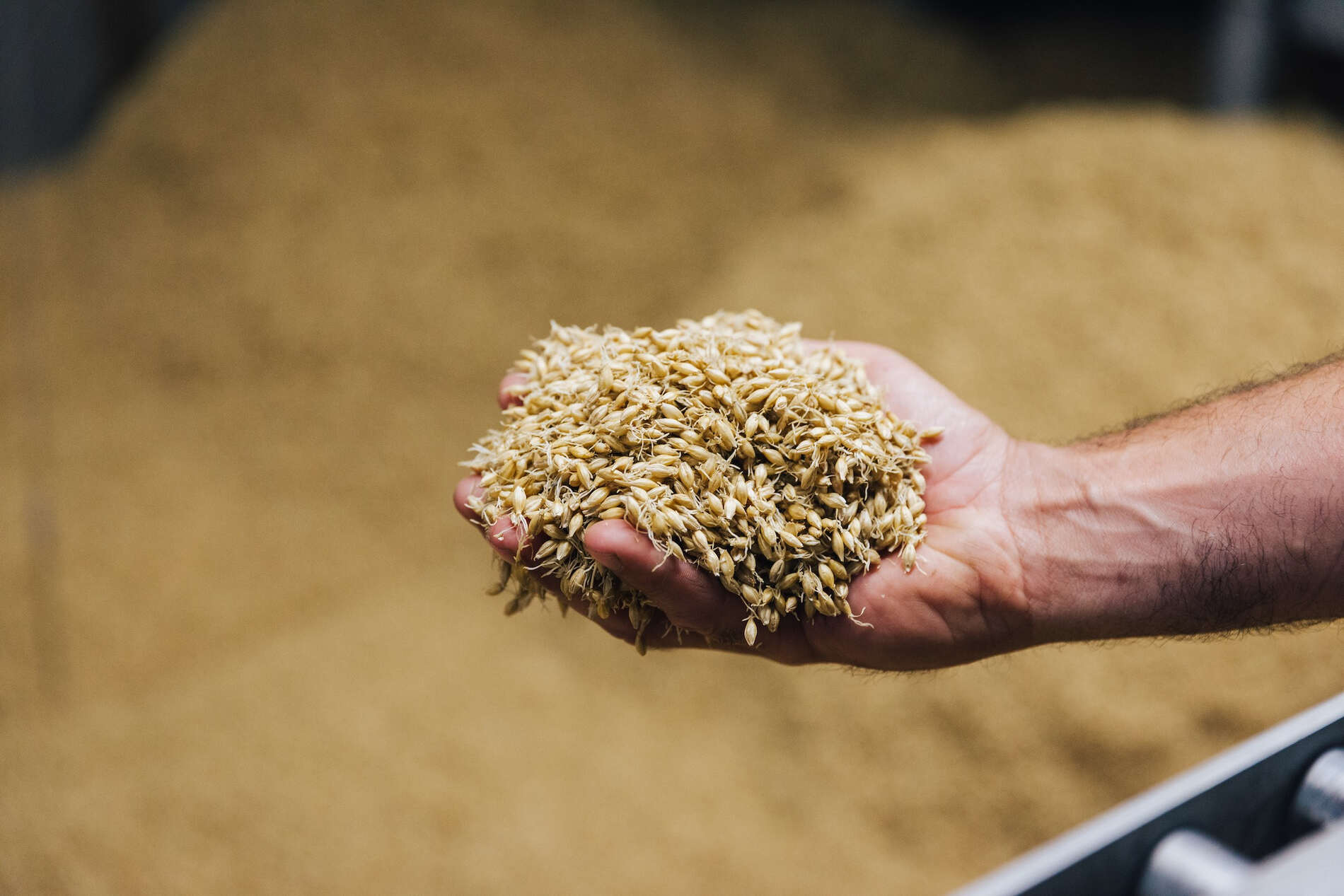
Here’s some barley in the process of being malted. You can see tiny shoots coming out of each kernel, as the barley undergoes germination.
ON TO THE BREW
BREWING (BRIEFLY) EXPLAINED
Ultimately, brewers will take their grains (which they call “grist”) and, after milling it to crack open the grain’s husks, complete the following four steps that encapsulate the very fundamentals of making wort.
- They soak the grains in hot water in a process called mashing.
- They then rinse the sugars off all of the grains during the lautering phase, which is where the wort is created. Mashing and lautering, combined, can take around 2 – 3+ hours.
- Once the liquid wort is drained from the mash/ lauter tun, it is then boiled. During the boil is typically when the first hops are added.
- After boiling comes the whirlpool, where more hops or spices can be added, and where brewers remove any solids that have formed in the wort (think of how eggs go from liquid to solid, the same happens to glutens in grain, when they’re heated up).
The end result is our good friend wort (now with hops added to it), which, if we had to describe it, tastes like very sweet liquid bread with a touch of hop aroma and bitterness.
After that, the wort is cooled and the yeast is added. To get the full picture on what yeast does to all that sugary wort, just head to our next blog right here.

